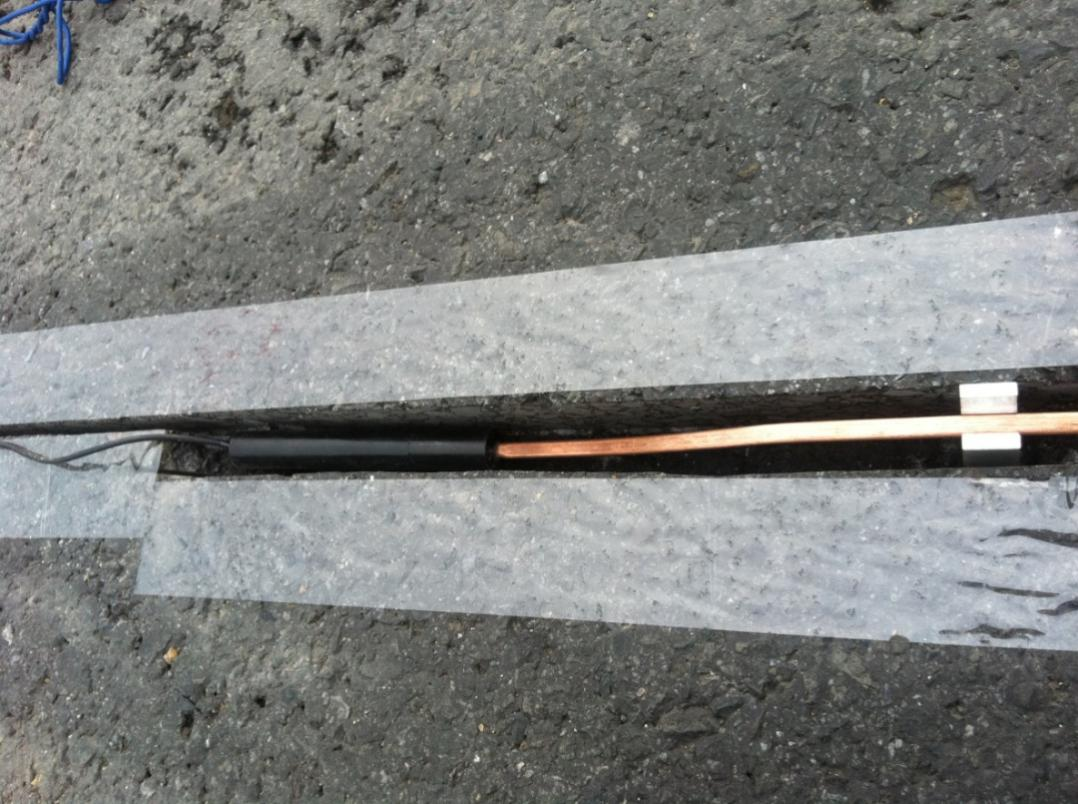 Ex: L=1.78 meters; Sensor’s length is 1.82 meters; Overall length is 1.94 meters
Ex: L=1.78 meters; Sensor’s length is 1.82 meters; Overall length is 1.94 meters | Sensor Length | Visible Brass Length | Overall Length(including ends) |
| 6'(1.82m) | 70''(1.78m) | 76''(1.93m) |
| 8'(2.42m) | 94''(2.38m) | 100''(2.54m) |
| 9'(2.73m) | 106''(2.69m) | 112''(2.85m) |
| 10'(3.03m) | 118''(3.00m) | 124''(3.15m) |
| 11'(3.33m) | 130''(3.30m) | 136''(3.45m) |
| Model No. | QSY8311 |
| Section size | ~3×7mm2 |
| Length | can be customized |
| Piezoelectric coefficient | ≥20pC/N Nominal value |
| Insulation resistance | >500MΩ |
| Equivalent capacitance | ~6.5nF |
| Working temperature | -25℃~60℃ |
| Interface | Q9 |
| Mounting bracket | Attach the mounting bracket with the sensor (Nylon material not recycled). 1 pcs bracket each 15 cm |



 5.3Pre-installation test 1, Test capacitance: Use a digital multi-meter to measure the total capacitance of the sensor with the cable attached. The measured value should be within the range specified by the corresponding length sensor and cable data sheet. The range of the tester is usually set to 20nF. The red probe is connected to the core of the cable, and the black probe is connected to the outer shield. Note that you should not hold both connection ends at the same time. 2, Test resistance: Measure the resistance at both ends of the sensor with a digital multi-meter. The meter should be set to 20MΩ. At this time, the reading on the watch should exceed 20MΩ, usually indicated by “1”.5.4 Fix mounting bracket
5.3Pre-installation test 1, Test capacitance: Use a digital multi-meter to measure the total capacitance of the sensor with the cable attached. The measured value should be within the range specified by the corresponding length sensor and cable data sheet. The range of the tester is usually set to 20nF. The red probe is connected to the core of the cable, and the black probe is connected to the outer shield. Note that you should not hold both connection ends at the same time. 2, Test resistance: Measure the resistance at both ends of the sensor with a digital multi-meter. The meter should be set to 20MΩ. At this time, the reading on the watch should exceed 20MΩ, usually indicated by “1”.5.4 Fix mounting bracket 

2 Axes
3 Axes

4 Axes

6 Axes

